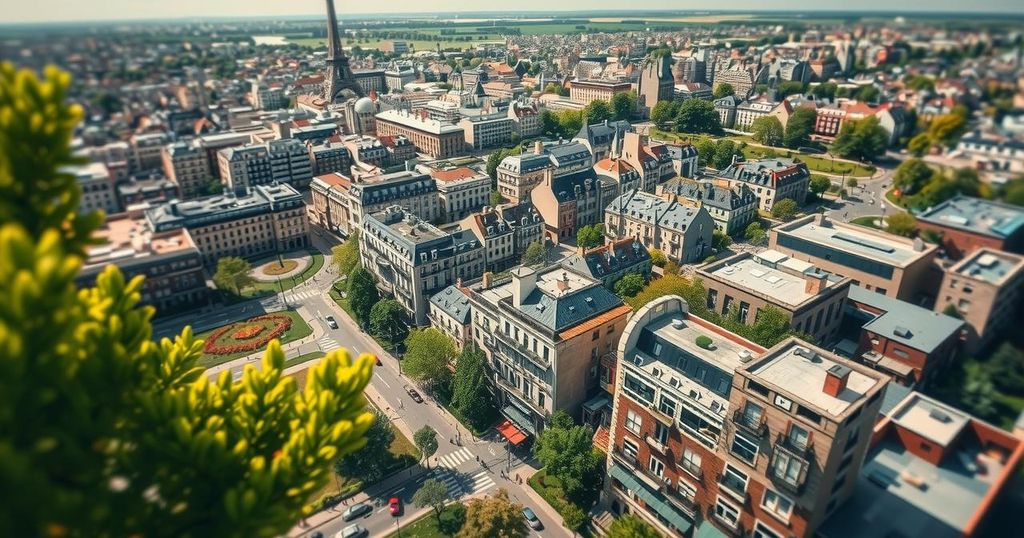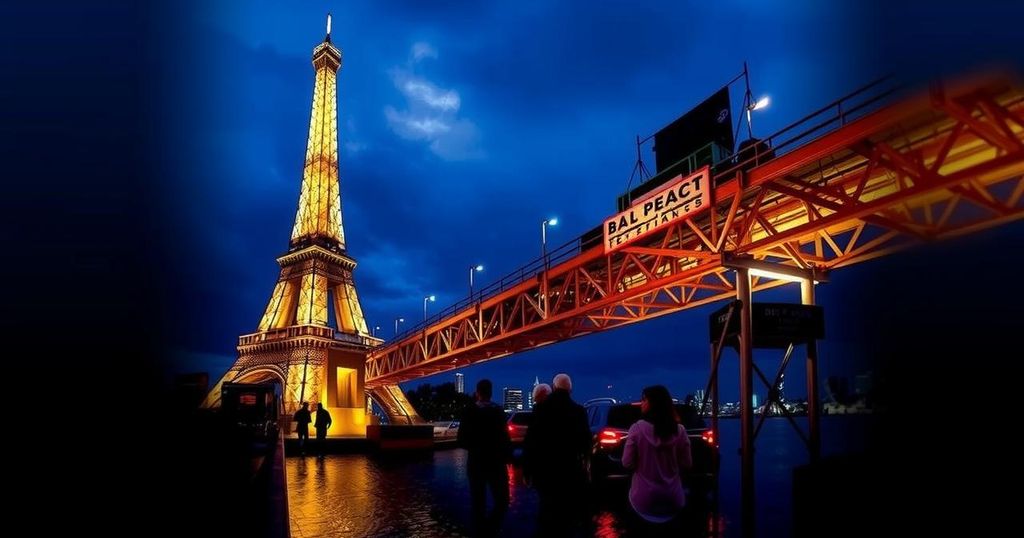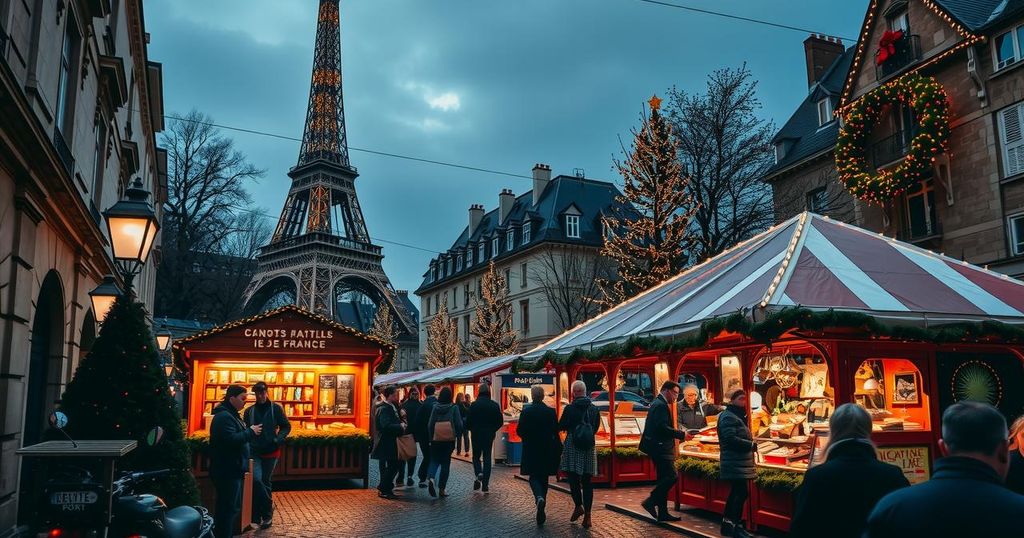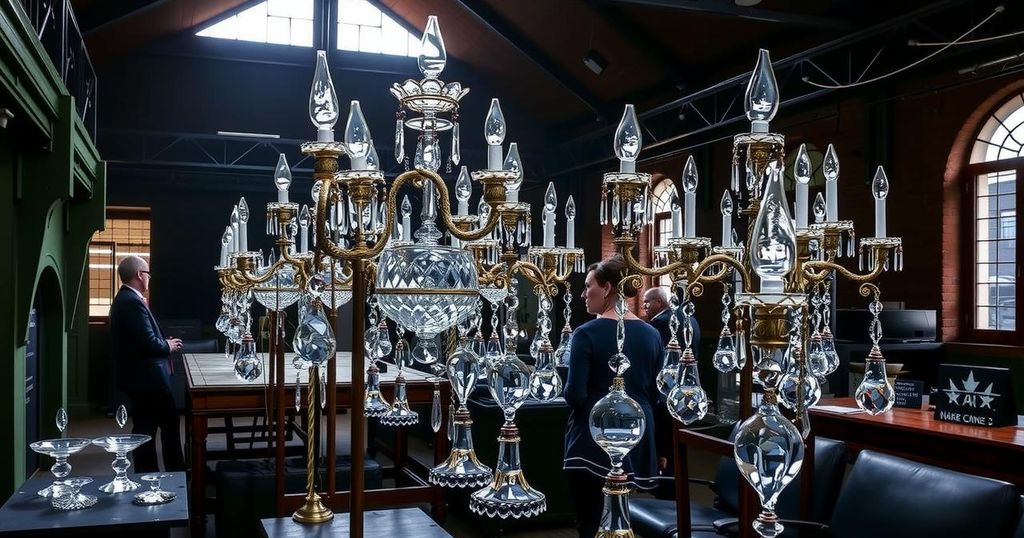Original Source: www.france24.com
The City of Paris has embarked on a revolutionary path with the launch of its unprecedented Local Bioclimatic Urban Plan (PLUb), responding to critical climate challenges and urban living issues. As the most densely populated city in Europe, Paris faces significant pressures from population decline and rising heat-related health risks. The existing green spaces are insufficient for the population’s needs, coupled with a severe housing crisis. This ambitious plan maps a future where environmental sustainability and social equity coalesce, aiming to enhance the quality of urban life while ensuring that every inhabitant has access to adequate housing and public green spaces.
In a momentous session last Wednesday, the Conseil de Paris unveiled a sweeping new bioclimatic urban plan aimed at reshaping the City of Light. This ambitious initiative seeks to tackle pressing climate change issues while addressing the ongoing housing crisis and urban organisation. One of the plan’s significant aims is to boost green spaces, increase social housing, and enforce stricter rental regulations. While lauded for its sustainability goals, the plan has stirred considerable debate about its feasibility among city officials and residents alike.
The culmination of four years of intensive dialogue and over 50,000 citizen proposals, the newly adopted Local Bioclimatic Urban Plan (PLUb) is a bold response to the needs of a city in transition. As Paris manoeuvres through challenges like rising temperatures, dwindling populations, and the increasing risk of heat-related mortality — highlighted by a 2023 study — the plan sets forth an ambitious vision for a livable future. Mayor Anne Hidalgo, garnering applause from her supporters, presented the plan’s four key pillars: climate adaptation, public housing expansion, local commerce enhancement, and architectural heritage preservation.
At the heart of this initiative lies the creation of 300 hectares of new public green spaces, a necessity underscored by World Health Organisation guidelines recommending a minimum of 10 square meters per resident. Currently, Parisians have only 8.6 square meters to enjoy, fostering a sense of urgency. While ambitious, this target faces doubt, with critics labelling it “almost laughable,” as they question the practicality of finding spaces for 420 football pitches amid the urban landscape.
Acknowledging the scale of the ambition, architect Charles-Antoine Depardon affirms that progress is already being made, with 50 hectares earmarked for development near the city’s edges and another 100 within public spaces like transformed street gardens, promising a breath of fresh air for Parisians. Additionally, previously inaccessible green areas, such as the expansive yet closed Jardin du Val-de-Grâce, are set to become open for public enjoyment by 2026.
The PLUb also pledges to confront the persistent housing crisis, targeting a public housing share of 40% by 2035, with a significant portion reserved for social housing. The plan aims to bridge the historical housing divide between the city’s east and west, compelling developers to allocate half of new constructions for social housing. It shifts focus from solely residential buildings to ensuring that new projects contain a mix of housing types for a more balanced urban growth.
Amidst concerns from the political opposition about potential hindrances to property values and the radical transformation of private property rights, the plan will systematically prioritise residential needs over commercial developments in central areas. The preservation of Parisian character remains crucial, insisting that any renovation of office spaces must incorporate housing elements.
In fighting the Airbnb phenomenon, the plan seeks to regulate short-term rentals. With stricter rules on new tourist rentals in critical areas, the city aims to prioritise long-term housing solutions, taking cues from Vienna’s housing model, where public housing comprises nearly 60% of the market.
As Paris embarks on this transformative journey, officials express optimism that these bold aspirations could foster significant positive changes over the coming decades. Mayor Hidalgo and her team envision a Paris that harmoniously balances urban living with the pressing needs of its populace and the environment, crafting a sustainable oasis within the historic corridors of the city. The path forward promises to be as challenging as it is inspiring, inviting every resident to dream of a greener, more inclusive Paris.




